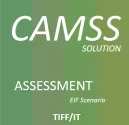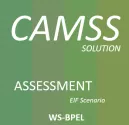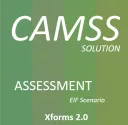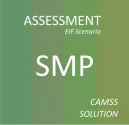
This is a dedicated space for sharing tools and guidance aiming at evaluating and rationalising interoperability solutions for public administrations.
The objective of this page is to promote the wider use the TES Cartography. It also strives to encourage the continuous update of the TES cartography by the respective solution owners, as well as to attract more solution owners to provide data on their TES to the TES Cartography.
The first stable version of the TES Cartography (TESCart v1.0.0) has been released on the 6th of October 2016. It includes 73 TES solutions, which can be accessed via the Cartography Tool (CarTool). Requests for access to the TES Cartography are welcome by sending an email to DIGIT-EIRA@ec.europa.eu, as the as access is restricted to European Commission officials.
1. About TES Cartography
TES stands for Trans-European Solutions. A Trans-European solution is an operational Interoperable European Solution (IES) owned by the European Commission or other bodies (in some cases co-funded by MSs) in support to the implementation and advancement of EU policies. An Interoperable European Solution (IES) is an ICT interoperability solution, developed or used by Public Administrations that facilitates the delivery of electronic Public Services by supporting business capabilities involving cross-border exchange of information between Public Administrations and Public Administrations (or Citizens or Businesses) in support to the implementation and advancement of EU, national or local Public Policies.
TES cartography means a repository of Trans-European interoperability solutions for European public administrations provided by European Union institutions, presented in a common format and modelled using the European Interoperability Reference Architecture (EIRA)[1].
2. Context
This initiative falls under Action 2016.36 Assessment of trans-European systems supporting EU policies of the ISA² Programme. This action supports the European Commission in implementing an overall strategy to rationalise and streamline the IT systems it develops, maintains and operates. This concerns both internal IT tools for administrative purposes and external IT tools used to implement EU policies in Member States.
The absence of cartography is an issue for applying the best practices in portfolio management. Without it, it is difficult and costly to make well-founded decisions on rationalisation and on future developments due to the limited understanding and overview of the reusability and interoperability levels of the operational solutions.
Currently European Public Administrations face the challenge of using technology to become more efficient and ‘doing more with less’. This initiative on rationalisation of IT systems supporting EU policies will contribute to this objective by fostering reuse and contributing to better interoperability.
3. Expected benefits
By using EIRA to document and classify solution building blocks, the TES cartography facilitates the discovery and understanding of existing solutions which can be reused by public administrations at any level. This will accelerate the delivery of public services in a cost-effective manner.
By making available a portfolio of solutions, guidelines and tools to evaluate a project and provide recommendations based on the TES Cartography, the following benefits are expected to result from this initiative:
- Rationalisation of the number of information systems supporting EU policies. This will result in a reduction of costs in terms of development, maintenance, implementation, operation, training, etc. at the EU and national level;
- Simplification of the cooperation between EU wide administrations;
- Provision of additional flexibility and efficiency to the Commission in its policy execution role;
- Avoidance of new redundant developments and cost-savings.
4. Additional Materials and Tools
- Kick-off presentations;
- Link to national cartographies when existing;
- Guidelines on how to analyse IOP in a national cartography;
- Guidelines on how to make rationalisation proposals in a national cartography after their finalisation.
- Interoperability Quick Assessment Toolkit





